Remember how I asserted that one of the features that establishes Ecuador as one of the best countries for birdwatching in the world was a road essentially dedicated to birdwatching? Well, I should also mention that this gorgeous country is home to a town that celebrates birding like none other. The rural town of Mindo may lack the cosmopolitan class (not to mention 99.9% of the population) of Quito but it comes across as a world leader in per capita appreciation of the power of ecotourism!
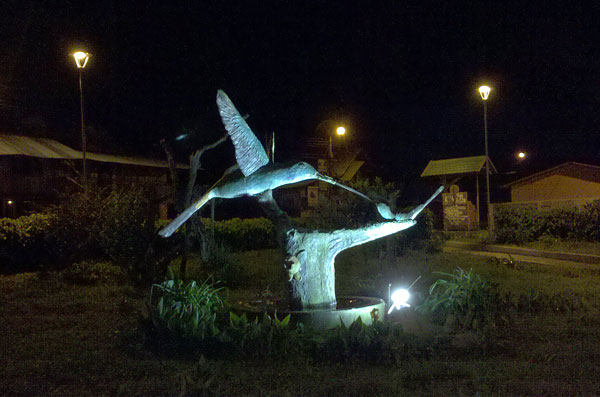
Hummingbird statuary in the Mindo town square
Seriously, I’ve never visited a town so welcoming to birdwatchers. Resplendent avian artwork illustrated most surfaces, advertisements for eco-attractions lined the main drag, and tourists openly ogled avifauna in the street. OK, David Ringer and I were the ones wielding binoculars in broad daylight but the important point is that the locals didn’t mind! Birding is both business and pleasure in Mindo, home of the biggest Christmas Bird Count list in the Americas (this year’s 420 species was just shy of their record 425.)
Anyway, birding a scrubby, undeveloped corner lot turned out to be quite productive, producing birds I didn’t see elsewhere in Ecuador. One surprisingly elusive species, believe it or not, was Shiny Cowbird, which did quite well in town. Smooth-billed Anis, Squirrel Cuckoos, and Lemon-rumped Tanagers also appreciated the civilized environment. My favorite Mindo bird, and I’m truly shocked to be admitting this, was a tyrannulet. In November 2008, I had the dubious pleasure of viewing my first Northern Beardless-Tyrannulet at Bentsen-Rio Grande Valley State Park. The experience of that particular species was so underwhelming that I’ve disparaged beardless-tyrannulets ever since. Well, the charming little Southern Beardless-Tyrannulet made me take all crass remarks back. This little tyrant has character!
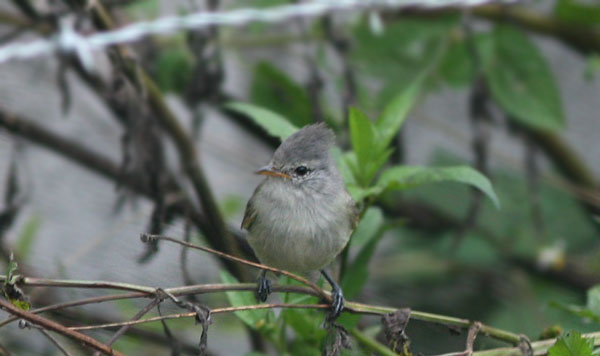
Southern Beardless-Tyrannulet
The long grasses and weeds lining most lots were superior habitat for seedeaters and grassquits. The latter were easy to identify, as Yellow-faced and Blue-Black Grassquits are, in this range, unmistakable.
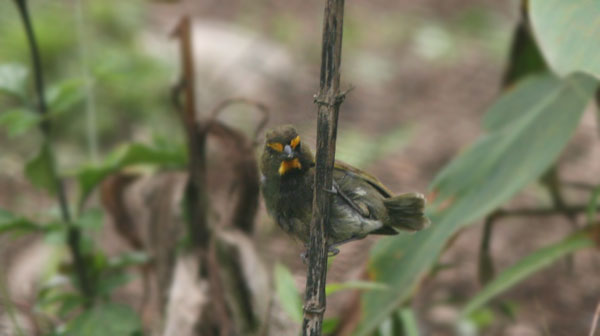
Yellow-faced Grassquit
Seedeaters, even the ones that are sometimes identified as grassquits, can be much more challenging. Do you dare identify this bird?
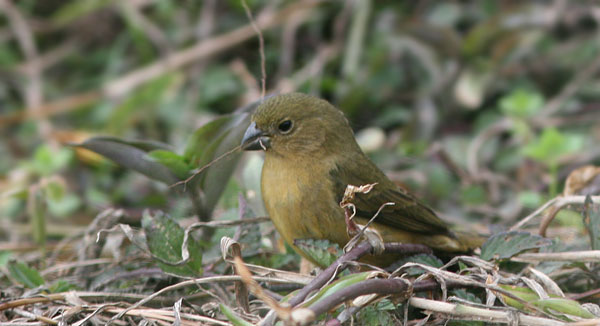
At least adult male Yellow-bellied Seedeaters are easy to pick out.
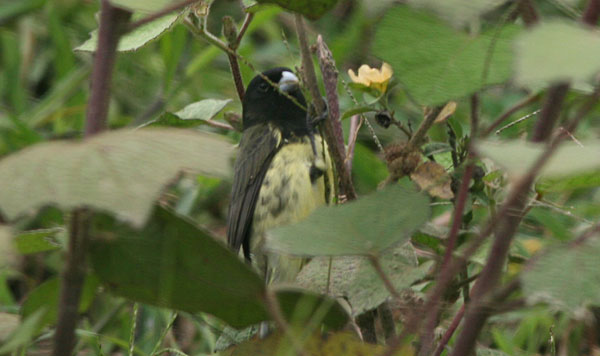
Yellow-bellied Seedeater
Speaking of yellow, we stayed overnight in Mindo at Hacienda San Vicente, affectionately known as the Yellow House. Renato spoke very highly of the proprietresses, with, we soon learned, very good reason. The “Three Marias,” a mother and her two daughters, were warm and accommodating, evincing a strong interest in all aspects of ecotourism and nature appreciation. The grounds of the Yellow House were beautiful, but we regrettably had no time to explore the extensive trails. Too bad, since the hacienda attracts hundreds of birds, including owls, nightjars, and potoos. We did make a quick night run in hopes of spotting one of the local potoos but failed. On the bright side, we did get great headlight-illuminated looks at an Armadillo crossing the road; when I lived in Texas, the only armadillos I saw were ex-armadillos, if you know what I mean.
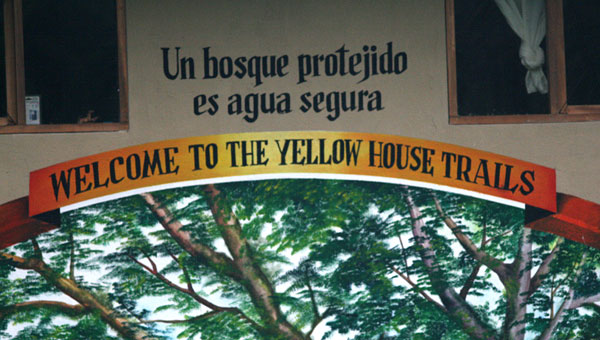











Nice Mike, very nice. While I was watching the guy change the tire on the van, you manage to get these very nice pictures of the seeedeaters and grassquits which I never saw! I agree with you Mindo is “welcoming to birdwatchers” like no other place. I love going there and every time I discover something new and exiting in the sorroundings of this magical place.
Mike: I’m on my way to Bellavista and Galapagos in October. Your comment about towns welcoming birders, however, brought back some wonderful memories. Have you been to Point Pelee, Ontario? The town there, Leamington, even has a huge banner hung across the street: Welcome Birdwatchers! They are very birder conscious. Walking into a restaurant and seeing stacks of field guides and optics stashed everywhere is not a sight you see often.
Also, about the Northern Beardless Tyrannulet: I saw the bird on a trip to the King Ranch several years ago. Talk about being underwhelmed. I almost felt cheated.
Thanks for your site and pics!
Paulette, thanks for your comment. I haven’t been to Point Pelee yet but look forward to such a warm reception. And I’m glad to hear that you agree with me about the Northern Beardless Tyrannulet. You’re sure to appreciate the Southern one much more!